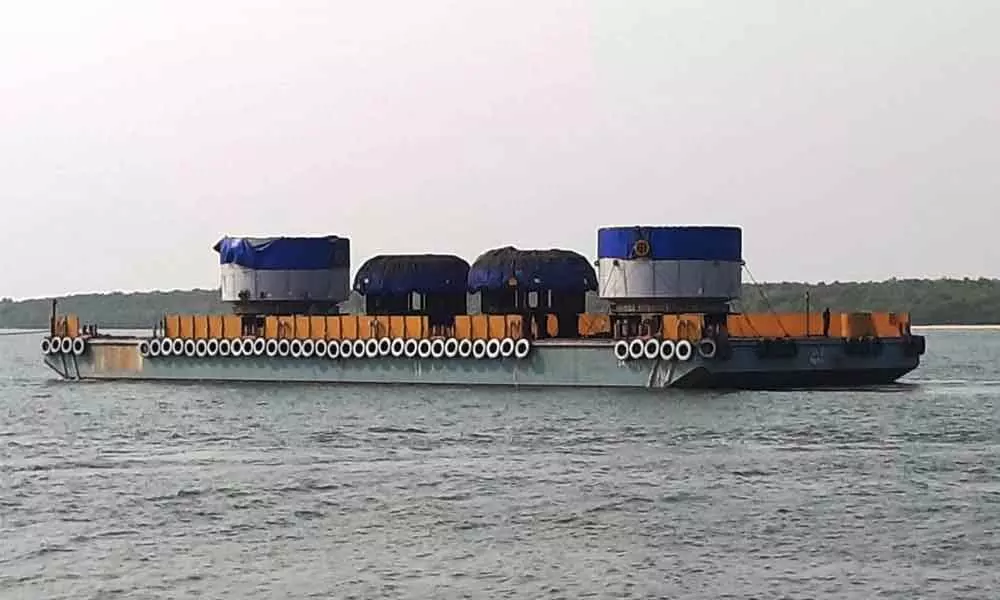A landmark effort to decarbonise steel sector

The Tata Steel has used inland waterways to bring heavy machinery for its Kalinga Nagar plant in Jajpur for its expansion.
Jajpur: The Tata Steel has used inland waterways to bring heavy machinery for its Kalinga Nagar plant in Jajpur for its expansion. The private steel plant' consignment sailed in a chartered vessel from Shanghai to Paradip port. It was then loaded on a barge that travelled up to the Luna River and was finally unloaded at Marsaghai (Kendrapara district) on March 15.
Thereafter, the consignment was transported via roadways and reached the project site on Saturday. The Engineering & Project (E&P) division of the steel mill used multimodal logistics, including inland waterways, for shipping nearly 1,000 cubic meters (CBM) of four super over dimensional assembled cargo (SODCs), each weighing up to 100 metric tonnes having a diameter of eight meters. These project cargoes are part of the Slag Granulation Plant that is being set-up in Kalinga Nagar.
For this expansion project, the company had roped in Deugro Projects India Pvt. Ltd., a leading logistic solution provider in freight forwarding and project logistics solutions.
Earlier this year, it had undertaken its maiden multi-modal shipment of TMT bars from West Bengal to Assam via the India-Bangladesh Protocol Route.
It was a landmark effort to decarbonise the steel sector. "This will pave the way for a sustainable logistics model with a potential cost advantage, which will be achieved through consolidation and import of plant and machinery in an assembled condition. This will also contribute towards decarbonisation of the steel sector while also improving road safety due to minimised road movement," said an official of Tata steel. Company's E&P division has taken an initiative for executing multi-modal logistics to increase its capability in importing assembled over-dimensional cargos (ODC)/ Overweight cargos (OWC)/ Super ODC (SODC) project cargos by unlocking the potential of inland waterways to connect to the rest of world. This will eliminate the logistics challenge of bypassing en route infrastructure constraints across the roadways.
This will also increase flexibility of vessel options from foreign countries to various ports of the country by connecting its project sites through a mix of inland waterways, coastal movement, and roadways transportation.
The waterway route will also open a new mode of transportation for SODC project cargo to overcome future challenges and uncertainties involved in road restrictions. This will also enable the import of bigger sized assembled equipment directly to the site, reducing fabrication, assembly, supervision jobs at the plant site.















